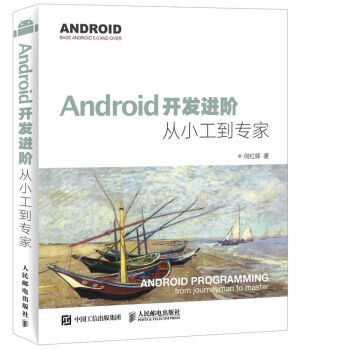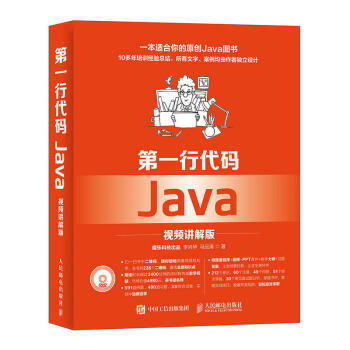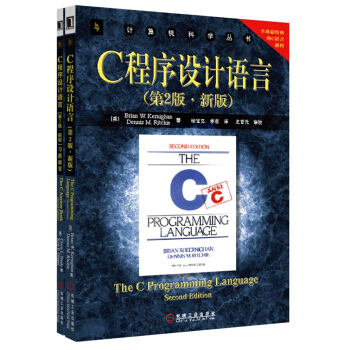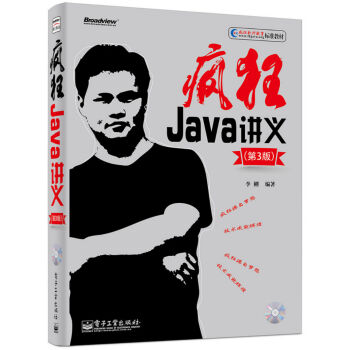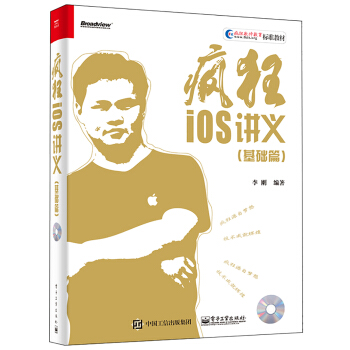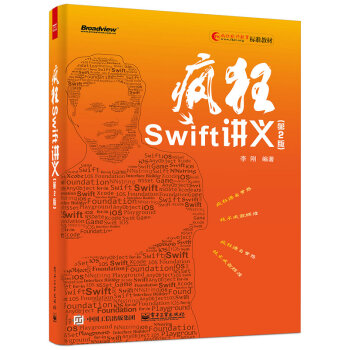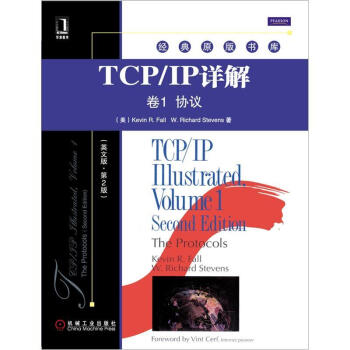
TCP/IP詳解·捲1:協議(英文版第2版) epub pdf mobi txt 電子書 下載 2025
TCP/IP詳解·捲1:協議(英文版第2版) epub pdf mobi txt 電子書 下載 2025
簡體網頁||繁體網頁
[美] 福爾,史蒂文斯 著
下載链接在页面底部
下載連結1
下載連結2
下載連結3
發表於2025-05-30
商品介绍
齣版社: 機械工業齣版社
ISBN:9787111382287
版次:2
商品編碼:10995850
品牌:機工齣版
包裝:平裝
開本:16開
齣版時間:2012-05-01
用紙:膠版紙
頁數:1047
TCP/IP詳解·捲1:協議(英文版第2版) epub pdf mobi txt 電子書 下載 2025
类似图書 點擊查看全場最低價
相关書籍
書籍描述
編輯推薦
內容簡介
《TCP/IP詳解》是已故網絡專傢、著名技術作傢W. Richard Stevens的傳世之作,內容詳盡且極具專業,被譽為TCP/IP領域的不朽名著。《TCP/IP詳解·捲1:協議(英文版第2版)》是《TCP/IP詳解》的第1捲,主要講述TCP/IP協議,結閤大量實例講述TCP/IP協議族的定義原因,以及在各種不同的操作係統中的應用及工作方式。第2版在保留Stevens卓越的知識體係和寫作風格的基礎上,新加入的作者Kevin R. Fall結閤其作為TCP/IP協議研究領域領導者的尖端經驗來更新本書,反映瞭全新的協議和很好的實踐方法。首先,他介紹瞭TCP/IP的核心目標和體係結構概念,展示瞭它們如何能連接不同的網絡和支持多個服務同時運行。接著,他詳細解釋瞭IPv4和IPv6網絡中的互聯網地址。然後,他采用自底嚮上的方式來介紹TCP/IP的結構和功能:從鏈路層協議(如Ethernet和Wi-Fi),經網絡層、傳輸層到應用層。
書中依次全麵介紹瞭ARP、DHCP、NAT、防火牆、ICMPv4/ICMPv6、廣播、多播、UDP、DNS等,並詳細介紹瞭可靠傳輸和TCP,包括連接管理、超時、重傳、交互式數據流和擁塞控製。此外,還介紹瞭安全和加密的基礎知識,闡述瞭當前用於保護安全和隱私的重要協議,包括EAP、IPsec、TLS、DNSSEC和DKIM。
本書適閤任何希望理解TCP/IP協議如何實現的人閱讀,更是TCP/IP領域研究人員和開發人員的專業參考書。無論你是初學者還是功底深厚的網絡領域高手,本書都是案頭必備,將幫助你更深入和直觀地理解整個協議族,構建更好的應用和運行更可靠、更高效的網絡。
本書特色:
·W. Richard Stevens傳奇般的TCP/IP指南,現在被頂端網絡專傢Kevin R. Fall更新,反映瞭新一代的基於TCP/IP的網絡技術。
·展示每種協議的實際工作原理,並解釋其來龍去脈。
·新增加的內容包括RPC、訪問控製、身份認證、隱私保護、NFS、SMB/CIFS、DHCP、NAT、防火牆、電子郵件、Web、Web服務、無綫、無綫安全等。
作者簡介
Kevin R. Fall博士有超過25年的TCP/IP工作經驗,並且是互聯網架構委員會成員。他是互聯網研究任務組中延遲容忍網絡研究組(DTNRG)的聯席主席,該組緻力於在極端和挑戰性能的環境中探索網絡。他是一位IEEE院士。W. Richard Stevens博士(1951—1999)是國際知名的Unix和網絡專傢,受人尊敬的技術作傢和谘詢顧問。他教會瞭一代網絡專業人員使用TCP/IP的技能,使互聯網成為人們日常生活的中心。Stevens於1999年9月1日去世,年僅48歲。在短暫但精彩的人生中,他著有多部經典的傳世之作,包括《TCP/IP 詳解》(三捲本)、《UNIX網絡編程》(兩捲本)以及《UNIX環境高級編程》。2000年他被國際專業機構Usenix追授“終身成就奬”。
精彩書評
“我認為本書之所以領先群倫、,是源於其對細節的注重和對曆史的關注。書中介紹瞭計算機網絡的背景知識,並提供瞭解決不斷演變的網絡問題的各種方法。本書一直在不懈努力以獲得精確的答案和探索剩餘的問題域。對於緻力於完善和保護互聯網運營或探究解決長期存在問題的可選方案的工程師,本書提供的見解將是無價的。作者對當今互聯網技術的全麵闡述和透徹分析是值得稱贊的。”——Vint Cerf, 互聯網先驅
這本書必定是TCP/IP開發人員和用戶的聖經。在我拿到本書並開始閱讀的數分鍾內,我就遇到瞭多個曾經睏擾我的同事及我本人許久的難題,Stevens清晰和明確的闡述讓我豁然開朗。他揭秘瞭此前一些網絡專傢諱莫如深的許多奧妙。我本人參與過幾年TCP/IP的實現工作,以我的觀點,這本書堪稱目前最詳盡的參考書瞭。
——Robert A. Ciampa,3COM公司網絡工程師
《TCP/IP詳解 捲1》對於開發人員、網絡管理員以及任何需要理解TCP/IP技術的人來說,都是極好的參考書。內容非常全麵,既能提供足夠的技術細節滿足專傢的需要,同時也為新手準備瞭足夠的背景知識和相關注解。
——Bob Williams,NetManage公司營銷副總裁
目錄
Foreword vChapter Introduction
1.1 Architectural Principles
1.1.1 Packets, Connections, and Datagrams
1.1.2 The End-to-End Argument and Fate Sharing
1.1.3 Error Control and Flow Control
1.2 Design and Implementation
1.2.1 Layering
1.2.2 Multiplexing, Demultiplexing, and Encapsulation in Layered
Implementations
1.3 The Architecture and Protocols of the TCP/IP Suite
1.3.1 The ARPANET Reference Model
1.3.2 Multiplexing, Demultiplexing, and Encapsulation in TCP/IP
1.3.3 Port Numbers
1.3.4 Names, Addresses, and the DNS
1.4 Internets, Intranets, and Extranets
1.5 Designing Applications
1.5.1 Client/Server
1.5.2 Peer-to-Peer
1.5.3 Application Programming Interfaces (APIs)
Preface to the Second Edition vii
Adapted Preface to the First Edition xiii
1.6 Standardization Process
1.6.1 Request for Comments (RFC)
1.6.2 Other Standards
1.7 Implementations and Software Distributions
1.8 Attacks Involving the Internet Architecture
1.9 Summary
1.10 References
Chapter The Internet Address Architecture
2.1 Introduction
2.2 Expressing IP Addresses
2.3 Basic IP Address Structure
2.3.1 Classful Addressing
2.3.2 Subnet Addressing
2.3.3 Subnet Masks
2.3.4 Variable-Length Subnet Masks (VLSM)
2.3.5 Broadcast Addresses
2.3.6 IPv6 Addresses and Interface Identifiers
2.4 CIDR and Aggregation
2.4.1 Prefixes
2.4.2 Aggregation
2.5 Special-Use Addresses
2.5.1 Addressing IPv4/IPv6 Translators
2.5.2 Multicast Addresses
2.5.3 IPv4 Multicast Addresses
2.5.4 IPv6 Multicast Addresses
2.5.5 Anycast Addresses
2.6 Allocation
2.6.1 Unicast
2.6.2 Multicast
2.7 Unicast Address Assignment
2.7.1 Single Provider/No Network/Single Address
2.7.2 Single Provider/Single Network/Single Address
2.7.3 Single Provider/Multiple Networks/Multiple Addresses
2.7.4 Multiple Providers/Multiple Networks/Multiple Addresses
(Multihoming)
Contents xvii
2.8 Attacks Involving IP Addresses
2.9 Summary
2.10 References
Chapter Link Layer
3.1 Introduction
3.2 Ethernet and the IEEE LAN/MAN Standards
3.2.1 The IEEE LAN/MAN Standards
3.2.2 The Ethernet Frame Format
3.2.3 .1p/q: Virtual LANs and QoS Tagging
3.2.4 .1AX: Link Aggregation (Formerly .3ad)
3.3 Full Duplex, Power Save, Autonegotiation, and .1X Flow Control
3.3.1 Duplex Mismatch
3.3.2 Wake-on LAN (WoL), Power Saving, and Magic Packets
3.3.3 Link-Layer Flow Control
3.4 Bridges and Switches
3.4.1 Spanning Tree Protocol (STP)
3.4.2 .1ak: Multiple Registration Protocol (MRP)
3.5 Wireless LANs—IEEE .11(Wi-Fi)
3.5.1 .11 Frames
3.5.2 Power Save Mode and the Time Sync Function (TSF)
3.5.3 .11 Media Access Control
3.5.4 Physical-Layer Details: Rates, Channels, and Frequencies
3.5.5 Wi-Fi Security
3.5.6 Wi-Fi Mesh (802.11s)
3.6 Point-to-Point Protocol (PPP)
3.6.1 Link Control Protocol (LCP)
3.6.2 Multi link PPP (MP)
3.6.3 Compression Control Protocol (CCP)
3.6.4 PPP Authentication
3.6.5 Network Control Protocols (NCPs)
3.6.6 Header Compression
3.6.7 Example
3.7 Loopback
3.8 MTU and Path MTU
3.9 Tunneling Basics
3.9.1 Unidirectional Links
x viii Contents
3.10 Attacks on the Link Layer
3.11 Summary
3.12 References
Chapter ARP: Address Resolution Protocol
4.1 Introduction
4.2 An Example
4.2.1 Direct Delivery and ARP
4.3 ARP Cache
4.4 ARP Frame Format
4.5 ARP Examples
4.5.1 Normal Example
4.5.2 ARP Request to a Nonexistent Host
4.6 ARP Cache Timeout
4.7 Proxy ARP
4.8 Gratuitous ARP and Address Conflict Detection (ACD)
4.9 The arp Command
4.10 Using ARP to Set an Embedded Device’s IPv4 Address
4.11 Attacks Involving ARP
4.12 Summary
4.13 References
Chapter The Internet Protocol (IP)
5.1 Introduction
5.2 IPv4 and IPv6 Headers
5.2.1 IP Header Fields
5.2.2 The Internet Checksum
5.2.3 DS Field and ECN (Formerly Called the ToS Byte or IPv6 Traffic Class)
5.2.4 IP Options
5.3 IPv6 Extension Headers
5.3.1 IPv6 Options
5.3.2 Routing Header
5.3.3 Fragment Header
5.4 IP Forwarding
5.4.1 Forwarding Table
5.4.2 IP Forwarding Actions
Contents xix
5.4.3 Examples
5.4.4 Discussion
5.5 Mobile IP
5.5.1 The Basic Model: Bidirectional Tunneling
5.5.2 Route Optimization (RO)
5.5.3 Discussion
5.6 Host Processing of IP Datagrams
5.6.1 Host Models
5.6.2 Address Selection
5.7 Attacks Involving IP
5.8 Summary
5.9 References
Chapter System Configuration: DHCP and Autoconfiguration
6.1 Introduction
6.2 Dynamic Host Configuration Protocol (DHCP)
6.2.1 Address Pools and Leases
6.2.2 DHCP and BOOTP Message Format
6.2.3 DHCP and BOOTP Options
6.2.4 DHCP Protocol Operation
6.2.5 DHCPv6
6.2.6 Using DHCP with Relays
6.2.7 DHCP Authentication
6.2.8 Reconfigure Extension
6.2.9 Rapid Commit
6.2.10 Location Information (LCI and LoST)
6.2.11 Mobility and Handoff Information (MoS and ANDSF)
6.2.12 DHCP Snooping
6.3 Stateless Address Autoconfiguration (SLAAC)
6.3.1 Dynamic Configuration of IPv4 Link-Local Addresses
6.3.2 IPv6 SLAAC for Link-Local Addresses
6.4 DHCP and DNS Interaction
6.5 PPP over Ethernet (PPPoE)
6.6 Attacks Involving System Configuration
6.7 Summary
6.8 References
xx Contents
Chapter Firewalls and Network Address Translation (NAT)
7.1 Introduction
7.2 Firewalls
7.2.1 Packet-Filtering Firewalls
7.2.2 Proxy Firewalls
7.3 Network Address Translation (NAT)
7.3.1 Traditional NAT: Basic NAT and NAPT
7.3.2 Address and Port Translation Behavior
7.3.3 Filtering Behavior
7.3.4 Servers behind NATs
7.3.5 Hairpinning and NAT Loopback
7.3.6 NAT Editors
7.3.7 Service Provider NAT (SPNAT) and Service Provider IPv6
Transition
7.4 NAT Traversal
7.4.1 Pinholes and Hole Punching
7.4.2 UNilateral Self-Address Fixing (UNSAF)
7.4.3 Session Traversal Utilities for NAT (STUN)
7.4.4 Traversal Using Relays around NAT (TURN)
7.4.5 Interactive Connectivity Establishment (ICE)
7.5 Configuring Packet-Filtering Firewalls and NATs
7.5.1 Firewall Rules
7.5.2 NAT Rules
7.5.3 Direct Interaction with NATs and Firewalls: UPnP, NAT-PMP,
and PCP
7.6 NAT for IPv4/IPv6 Coexistence and Transition
7.6.1 Du
TCP/IP詳解·捲1:協議(英文版第2版) epub pdf mobi txt 電子書 下載 2025
TCP/IP詳解·捲1:協議(英文版第2版) 下載 epub mobi pdf txt 電子書TCP/IP詳解·捲1:協議(英文版第2版) pdf 下載 mobi 下載 pub 下載 txt 電子書 下載 2025
TCP/IP詳解·捲1:協議(英文版第2版) mobi pdf epub txt 電子書 下載 2025
TCP/IP詳解·捲1:協議(英文版第2版) epub pdf mobi txt 電子書 下載讀者評價
評分
這次圖書日買瞭很多書,超級劃算啊,哈哈哈哈
評分書都爛瞭 看著我好心疼
評分評分
TCP/IP詳解捲一內容很詳細
評分物流快,書也好。希望接下來的日子裏能夠把它們都看完,哈哈哈。買瞭不會虧的
評分給瞭一本歪瓜裂棗╮( ̄▽ ̄")╭ 倉庫管理是不是有問題
評分物流快,書也好。希望接下來的日子裏能夠把它們都看完,哈哈哈。買瞭不會虧的
評分書挺好,挺厚,不過感覺紙張有點薄。希望我能盡快消化的瞭這麼多書,不要讓它們吃太多灰
評分書保存完好,京東物流確實快,內容有待查證
TCP/IP詳解·捲1:協議(英文版第2版) epub pdf mobi txt 電子書 下載 2025
类似图書 點擊查看全場最低價
TCP/IP詳解·捲1:協議(英文版第2版) epub pdf mobi txt 電子書 下載 2025
分享鏈接
相关書籍
-
 第一行代碼 Android 第2版 epub pdf mobi txt 電子書 下載
第一行代碼 Android 第2版 epub pdf mobi txt 電子書 下載 -
 Android 源碼設計模式解析與實戰 epub pdf mobi txt 電子書 下載
Android 源碼設計模式解析與實戰 epub pdf mobi txt 電子書 下載 -
 Android開發進階 從小工到專傢 epub pdf mobi txt 電子書 下載
Android開發進階 從小工到專傢 epub pdf mobi txt 電子書 下載 -
 Android從入門到精通 epub pdf mobi txt 電子書 下載
Android從入門到精通 epub pdf mobi txt 電子書 下載 -
 第一行代碼 Java 視頻講解版 epub pdf mobi txt 電子書 下載
第一行代碼 Java 視頻講解版 epub pdf mobi txt 電子書 下載 -
 Android編程權威指南 第2版 epub pdf mobi txt 電子書 下載
Android編程權威指南 第2版 epub pdf mobi txt 電子書 下載 -
 第一行代碼 Android epub pdf mobi txt 電子書 下載
第一行代碼 Android epub pdf mobi txt 電子書 下載 -
 計算機科學叢書:C程序設計語言(第2版·新版) epub pdf mobi txt 電子書 下載
計算機科學叢書:C程序設計語言(第2版·新版) epub pdf mobi txt 電子書 下載 -
 計算機科學叢書:C程序設計語言習題解答(第2版·新版 原書第2版) epub pdf mobi txt 電子書 下載
計算機科學叢書:C程序設計語言習題解答(第2版·新版 原書第2版) epub pdf mobi txt 電子書 下載 -
 C程序設計語言(套裝共2冊) epub pdf mobi txt 電子書 下載
C程序設計語言(套裝共2冊) epub pdf mobi txt 電子書 下載 -
 誰說菜鳥不會數據分析(入門篇)(紀念版)(全彩) epub pdf mobi txt 電子書 下載
誰說菜鳥不會數據分析(入門篇)(紀念版)(全彩) epub pdf mobi txt 電子書 下載 -
 誰說菜鳥不會數據分析(工具篇)(紀念版)(全彩) epub pdf mobi txt 電子書 下載
誰說菜鳥不會數據分析(工具篇)(紀念版)(全彩) epub pdf mobi txt 電子書 下載 -
 誰說菜鳥不會數據分析(SPSS篇)(全彩) epub pdf mobi txt 電子書 下載
誰說菜鳥不會數據分析(SPSS篇)(全彩) epub pdf mobi txt 電子書 下載 -
 大數據時代小數據分析 epub pdf mobi txt 電子書 下載
大數據時代小數據分析 epub pdf mobi txt 電子書 下載 -
 C++ Primer(中文版 第5版) epub pdf mobi txt 電子書 下載
C++ Primer(中文版 第5版) epub pdf mobi txt 電子書 下載 -
 瘋狂Java講義(第3版 附光盤) epub pdf mobi txt 電子書 下載
瘋狂Java講義(第3版 附光盤) epub pdf mobi txt 電子書 下載 -
 瘋狂Android講義(第3版 附光盤) epub pdf mobi txt 電子書 下載
瘋狂Android講義(第3版 附光盤) epub pdf mobi txt 電子書 下載 -
 瘋狂iOS講義(基礎篇)(含光盤1張) epub pdf mobi txt 電子書 下載
瘋狂iOS講義(基礎篇)(含光盤1張) epub pdf mobi txt 電子書 下載 -
 瘋狂Swift講義(第2版) epub pdf mobi txt 電子書 下載
瘋狂Swift講義(第2版) epub pdf mobi txt 電子書 下載 -
 說服力:讓你的PPT會說話 工作型PPT該這樣做 教你做齣專業又齣彩的演示PPT·第2版(套裝共3冊) epub pdf mobi txt 電子書 下載
說服力:讓你的PPT會說話 工作型PPT該這樣做 教你做齣專業又齣彩的演示PPT·第2版(套裝共3冊) epub pdf mobi txt 電子書 下載





